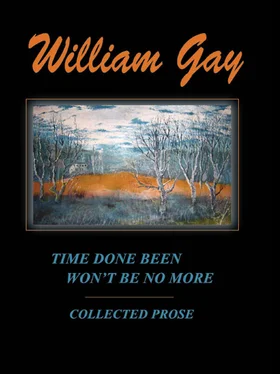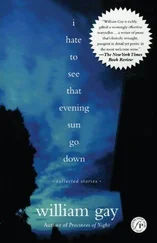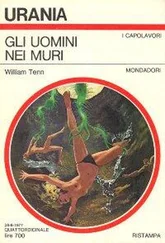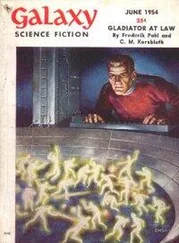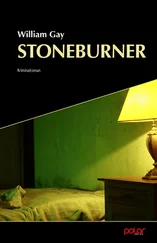This is Henry Thomas’s “Fishing Blues”, set to panpipes that sound older than America, older than anything. The sound is liberating, freewheeling, with an undercurrent of mystery not communicated by the words. On the surface it’s just a song about getting a line and bait and a pole and going down to the fishing hole and catching a catfish, bringing it home, and frying it up. Baits and lines and poles normally have a sexual symbolism in blues; the fish is a sometime signifier for female sexuality. But there’s nothing overt in the song, no innuendo in Thomas’s voice, which makes the song stranger still. You notice not what is present but what is absent, Smith was well aware that the fish also represented spirituality, and it acquires this meaning only in the context that Smith has placed it in.
After repeated listenings you realize that Smith’s genius was not only in selection but in placement, and that he had made a collage or crazy quilt of music in which everything matters, an impressionistic painting where every brushstroke counts.
In 1988 Smith became Shaman-in-Residence at the Naropa Institute in Boulder, Colorado, and longtime friend Rani Singh began the enormous task of gathering together the Harry Smith Archives, assembling his legacy, and sifting through the complicated and unlikely life Smith had led. A grant from the Grateful Dead’s Rex Foundation allowed Smith to live the last few years of his life in a productive and, for Smith, relatively stable manner.
After the Anthology was reissued on CD, Smith received a Grammy in 1991 for lifetime achievement. Smith would die later that year, but ascending the steps to the stage in a tuxedo must have seemed to him a transcendent moment.
I’m glad to say that my dreams came true, he told the audience. I lived to see the world changed through music.
He was eulogized at his memorial by the likes of Dave Van Ronk and Ed Sanders of the Fugs, but the memorial that will always be around is the Anthology itself. Smith had set out to document the past, but in the end it seems not a replica but the living past itself.
YOU WOULDN’T STEAL THIS RECORD, Greil Marcus wrote famously in a review, establishing once and for all the criteria by which greatness is judged. A great record is one you’d steal if you couldn’t get it any other way.
People steal David Johansen and the Harry Smiths . In less than a year I’ve lost eight or ten copies. I’ll take the jewel box down from the shelf, and it’s empty. It was there a week ago. I’ll loan a copy to a friend, and another friend will take it from him. Either the disc contains some marvelous new encoding that causes it to vanish after an arbitrary number of plays, or once they hear it, people just have to possess this record.
It was at the University of Minnesota that I first heard about the Johansen record. A professor of American literature was talking about Harry Smith and his folk anthology. You’ve got to hear this album by David Johansen and the Harry Smiths, the professor said.
This seemed something of a non sequitur. I thought of the New York Dolls. I thought of Buster Poindexter. I don’t think so, I said.
But he wouldn’t have it. He was a convert, a true believer. He was washed in the blood. He drove us across Minneapolis to a record shop called the Electric Foetus.
Got that new David Johansen? he asked a clerk.
Right over there, the clerk said, pointing, as if an unknown record on an unknown label was as common as locating a loaf of bread in a convenience store. The professor paid for the record and handed it to me, a faintly superior expression on his face as if he knew something I didn’t.
He did.
From the first notes of the first song it was apparent this wasn’t a mere tribute album. I recalled Elvis Presley being quoted as saying: I don’t sound like nobody. There was an almost eerie connection to Rabbit Brown, whose song “James Alley Blues” is covered, but Johansen didn’t sound like nobody either.
They sit regarding you from a black-and-white photo on the cover of their first album, The New York Dolls , with expressions that vary from simpers to cold stares. The five young men seated on the sofa are dressed in what looks like thrift-shop hooker garb, and they are pancaked and rouged and lipsticked, the square root of decadence. David Johansen is the one in the middle: huge, dark bouffant and platform shoes, mouth a painted Cupid’s bow.
Over all, the photograph is a sneer, an upraised middle finger that says, I don’t give a goddamn what you think . They’re going the Stones one better, not androgynous like Bowie or effeminate like Elton John but into some whole new territory. All in all they look just the way David Johansen says he wanted them to look: sixteen and bored shitless.
This is all geared to shock, or at least it was in 1973, when the album was released. The Dolls need to be taken in the context of 1973: the Eagles are flying over Hotel California , Bruce Springsteen was gearing himself up to be the future of rock n’ roll, his Time and Newsweek covers already on the horizon. The Dolls even shocked New York a little, very briefly. New York is notoriously hard to shock.
The music on the album is the aural equivalent of the cover, defiant and clarifying, an inside joke that says, There’s something happening here, and we don’t care if you know what it is or not. Flailing guitars and drums and an out-of-step bass kick in at ninety miles an hour and then accelerate in little two-minute concertos that sound like the early Stones bereft of all restraints and social concerns and literary pretensions. They sound like elevated trains and car collisions in which folks perish the neon cacophony of New York at night, the world ending not with a whimper but in a bedlam of rending crashes.
Johansen says the idea of the Dolls was to take music away from the recording studios and give it back to the kids, to make a sort of homemade music that anyone could do. That’s a valid idea; a kid can’t go out to the garage with three chords and a guitar and come up with Sgt. Pepper’s Lonely Heart’s Club Band or Smiley Smile . The New York Dolls put it within reach, and at the same time added the kick of rebellion that has fueled rock since the days of Jerry Lee Lewis and Little Richard.
For a giddy moment in the early 70s, the New York Dolls were at the cutting edge of rock music. Pursued by record companies and lionized by the Gotham underground and the rock critic literati simultaneously, Johansen and the Dolls seemed on the verge of stardom. They even fell in with a London fashion designer named Malcolm McLauren. He wanted to take them to England and outfit them in red patent leather. When the project fell through, McLauren returned to his native land and invented the Sex Pistols.
The Dolls recorded two albums. Neither sold very well, but they altered forever the idea of what a rock band could look and sound like. The Dolls were gone as suddenly as if they’d self-combusted. They left the field to imitators like Kiss, who refined the idea of dressing up and went on to make millions.
Johansen resurfaced as a solo singer-songwriter in the early 80s. His songwriting had improved, and his gruff post-Dylan voice stood out from the other folkies, but these records didn’t do much either, though they did manage to build on the cult audience of fans and critics he’d carried away from the Dolls. Then he reinvented himself once again. This time the mask was that of Buster Poindexter, a pompadoured lounge singer performing with a swing band. Though Johansen had never followed trends, just his own interests and obsessions, this time they coincided with popular taste. Buster Poindexter struck a chord with the audience somehow, and the persona lives on to this day, when, almost by popular demand, Johansen resurrects Buster at clubs or private parties.
Читать дальше
